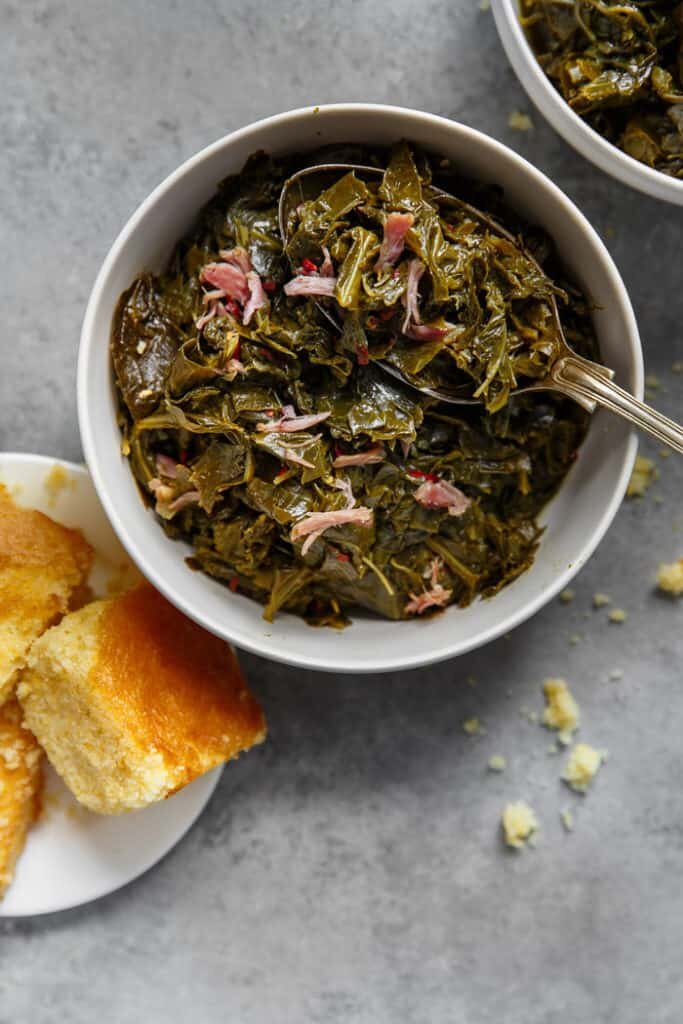A great way to incorporate your Thanksgiving leftovers with frost-tolerant veggies! Sohla incorporates all those ingredients into a clever, delicious, homey soup. A new take on leftovers, why not get creative? If you’ve already eaten all your leftovers, you can easily substitute the turkey carcass with a new bird.
This time of year, we eat frost-tolerant veggies and storage crops that were harvested earlier in the year. For frost-tolerant veggies, this is various hearty greens and crunchy roots like kale, collards, cabbage, chard and carrots, onions, turnips, beets, etc. We also enjoy storage crops like butternut squash, apples, and sweet potatoes. This is what nature designed for us to eat during these cool months to stay nourished and healthful, and what more could we ask for at this time!
Photo: David Malosh
Ingredients
Serves 4-6
For the Turkey Stock:
1 turkey carcass, picked clean (about 4 pounds)
1 TBSP apple cider vinegar, plus more to taste
For the Soup:
2 TBSP unsalted butter
2 medium sweet potatoes (about 1 pound), peeled and cut into bite-size cubes
1 medium yellow or white onion (about 10 ounces), chopped
Kosher salt
1 pound kale (any type), stripped from stems and coarsely chopped (about 6 lightly packed cups)
4 garlic cloves, smashed, peeled and chopped
½ tsp red-pepper flakes, plus more to taste
2 cups cubed leftover turkey
For the Dumplings:
2 ½ cups leftover stuffing, slightly warmed
2 large eggs
½ cup all-purpose flour
½ tsp baking powder
Prepare the stock: Roughly chop the carcass so you don’t have any pieces bigger than your hands. (This is just so the pieces fit more compactly in the pot — don’t overthink it.) Place in a pressure cooker. Add the vinegar and cover with 2 1/2 quarts water. Bring to full pressure and cook for 1 1/2 hours. Allow the pressure cooker to cool down naturally, pluck out and discard the larger bones, then strain the stock through a fine-mesh sieve, discarding solids. You should have 9 to 10 cups of stock. (You can also prepare the stock on the stovetop in a large pot, simmering for 3 1/2 to 4 hours, and topping off with water as needed.) Leftover stock can be kept in the refrigerator for 3 days or frozen for up to 3 months.
Prepare the soup: In a large Dutch oven or heavy pot over medium-high heat, melt the butter until foamy. Add the sweet potatoes, onion and a big pinch of kosher salt. Cover and cook, stirring occasionally, until the onion is tender and translucent, about 5 minutes.
Add the kale, garlic and red-pepper flakes, and season with a big pinch of kosher salt. Cover the pot and cook until the greens are wilted, about 2 minutes.
Add 2 quarts of the prepared turkey stock and season with kosher salt to taste. Increase the heat to bring the soup to a boil, then reduce to an active simmer and cook, partly covered, until the greens and sweet potatoes are tender, about 20 minutes.
While the soup simmers, prepare the dumplings: In a medium bowl, combine the stuffing and 1/3 cup of the turkey stock, and mash with a potato masher until the stuffing is broken up. Add the eggs, flour, baking powder and a big pinch of kosher salt, and mix until well combined.
Taste the soup and adjust the seasoning to taste with more salt, red-pepper flakes and vinegar, if needed. Stir in the turkey.
Using two big spoons, plop the stuffing mixture into the soup like big drop biscuits. Cover the pot, reduce heat to low, and gently simmer until dumplings feel set and firm, 15 to 20 minutes.
Divide soup across bowls. (If storing leftovers, scoop the dumplings out of the soup and store separately to prevent them from soaking up all the broth as they sit. Dumplings and soup will keep refrigerated for up to 2 days.)
Recipe by Sohla El-Waylly | NY Times Cooking












































